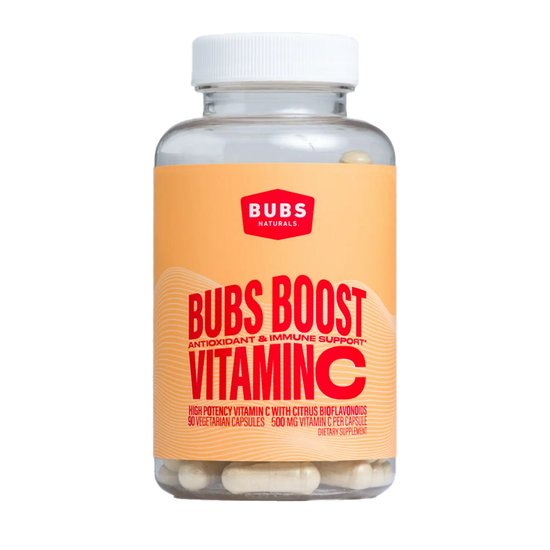Table of Contents
- Introduction
- Understanding Dark Circles: Causes and Types
- How Vitamin C Works: A Closer Look
- Choosing the Right Vitamin C Products
- Application Tips for Maximum Effectiveness
- Lifestyle Changes to Complement Vitamin C
- Other Treatments for Under Eye Circles
- Conclusion
- FAQ Section
We all have those mornings when we look in the mirror and are greeted by the all-too-familiar sight of dark under-eye circles. While the causes can be myriad—ranging from lack of sleep and allergies to genetics—the quest for effective remedies often leads us to wonder about the role of Vitamin C. Is it the magic potion we’ve been searching for to brighten and refresh our under-eye area? Let’s dive deep into this topic to uncover the truth about Vitamin C and its effect on under-eye circles.
Introduction
Dark circles can often feel like an unwelcome accessory, lingering despite our best efforts to conceal them. According to recent studies, almost 80% of people experience dark under-eye circles at some point in their lives, which can be exacerbated by factors such as lifestyle choices, overall health, and age. As we explore the potential benefits of Vitamin C, it's essential to first understand what causes these pesky shadows.
The purpose of this blog post is to unravel the complexities surrounding Vitamin C and its effectiveness against under-eye circles. We aim to provide a comprehensive view of how Vitamin C works, the types of dark circles it may address, and practical advice on incorporating it into your skincare routine.
By the end of this article, you will gain insights that could help you make informed decisions about your skincare regimen. Additionally, we will touch on alternatives and complementary treatments you might consider, ensuring you have a holistic understanding of how to tackle those dark circles.
Understanding Dark Circles: Causes and Types
Before we evaluate whether Vitamin C can help, we need to understand what causes dark under-eye circles. Here are the common culprits:
1. Periorbital Veins
One of the primary reasons for dark circles is the visibility of periorbital veins, which can appear bluish or purple beneath the thin skin around the eyes. Aging, genetics, and lifestyle choices can affect how prominent these veins appear.
2. Shallow Tear Troughs
As we age, we lose collagen and fat in the under-eye area, giving rise to hollow tear troughs that create shadows, hence contributing to the perception of dark circles. This can be further complicated by herniated fat pads, which may lead to puffiness.
3. Hyperpigmentation
Sometimes, dark circles are caused by localized areas of hyperpigmentation, which can be driven by various factors such as sun exposure, inflammation, or genetically predisposed skin. This is where Vitamin C may step in as a potential solution.
How Vitamin C Works: A Closer Look
Vitamin C, renowned for its antioxidant properties, plays a crucial role in skin health. By combating oxidative stress, it helps to shield skin cells from damage caused by free radicals. Here's how Vitamin C can be beneficial:
- Melanin Production Reduction: Vitamin C can help lighten hyperpigmented areas by inhibiting the enzyme tyrosinase, which is responsible for melanin production. When used consistently, it can significantly even out skin tone.
- Collagen Boost: Vitamin C is vital for collagen synthesis, helping to maintain skin elasticity and firmness. This is particularly beneficial for the delicate under-eye skin, which tends to lose volume with age.
- Hydration: Some formulations of vitamin C can also improve skin hydration, making the under-eye area appear plumper and more youthful.
The Caveat: When Vitamin C Might Not Help
While Vitamin C has incredible properties, it’s not a panacea. If your dark circles are primarily due to the visibility of blood vessels or structural issues, Vitamin C may not provide the desired results. Here are scenarios where Vitamin C may fall short:
- Not Targeting Vein Visibility: For dark circles arising from the visibility of periorbital veins, Vitamin C will not mask or reduce their appearance.
- Inadequate for Tear Troughs: If your dark circles result from shadowing caused by shallow tear troughs, Vitamin C alone may not be sufficient. In these cases, treatments such as fillers or surgical options might be more effective.
Choosing the Right Vitamin C Products
If you decide to incorporate Vitamin C into your skincare routine to address dark circles due to hyperpigmentation, consider these formulations:
1. Vitamin C Eye Creams
Look for eye creams specifically formulated for sensitive skin that contain stable forms of Vitamin C, like Sodium Ascorbyl Phosphate. These products are designed to brighten the under-eye area without causing irritation.
2. Serums
Incorporating a Vitamin C serum into your daily skincare routine can help improve overall skin tone. Serums often have a higher concentration of Vitamin C and can provide more dramatic results with consistent use.
3. Combo Products
Consider products that combine Vitamin C with other ingredients like hyaluronic acid for hydration or peptides for additional anti-aging benefits. This dual-action approach can help target multiple concerns, including puffiness and fine lines.
Application Tips for Maximum Effectiveness
Using vitamin C products correctly maximizes their benefits. Here are some tips to effectively incorporate Vitamin C into your skincare routine:
- Pat, Don’t Rub: When applying products, gently pat them into the skin using your ring finger, which applies the least pressure.
- Cleanse First: Always start with a clean face. This allows the active ingredients in the Vitamin C to absorb effectively.
- Layering: Apply Vitamin C products after cleansing and toning but before moisturizing. This ensures the skin is adequately prepared to absorb the serum.
Lifestyle Changes to Complement Vitamin C
In addition to topical treatments, you may want to adopt some lifestyle habits that help mitigate dark circles:
- Adequate Sleep: Prioritize quality sleep to reduce puffiness and improve the overall appearance of your under-eye area.
- Hydration: Drinking plenty of water can help improve skin hydration and overall health.
- Nutrition: Incorporate foods rich in Vitamin C, such as oranges, strawberries, and leafy greens, to bolster your skin from the inside out.
Other Treatments for Under Eye Circles
Sometimes, Vitamin C alone isn’t enough. Here are some treatments to consider if your dark circles persist:
1. Professional Treatments
- Laser Therapy: Treatments like PicoSure can target vascular issues and help reduce the visibility of dark circles.
- Injectable Fillers: For hollow or sunken areas, hyaluronic acid fillers can offer a temporary solution by plumping the skin.
2. Makeup Solutions
For immediate coverage, concealers designed specifically for the under-eye region can effectively mask dark circles and provide a brightening effect.
Conclusion
While Vitamin C can be a powerful ally in tackling dark under-eye circles, understanding the specific causes of your dark circles is crucial for effective treatment. It’s evident that Vitamin C excels at addressing hyperpigmentation and boosting collagen production, making it a worthy addition to your routine.
However, if your circles are due to other underlying issues, it may be worthwhile to consult with a dermatologist for a personalized approach that might include advanced treatments or thorough skincare assessments. Remember, we are committed to wellness and supporting active lifestyles through clean and effective products.
Together, let's embrace adventure while also prioritizing our wellness. For those interested in enhancing their skincare routine, we invite you to explore our Vitamin C+ supplement, perfect for supporting your overall skin health from the inside out.
FAQ Section
Q: Can I use Vitamin C with other products? A: Yes, Vitamin C can be layered with most skincare products. However, be cautious when combining it with retinol, as the two can sometimes irritate sensitive skin.
Q: How long does it take to see results from Vitamin C? A: Typically, you may begin to see improvement within a few weeks of consistent use. For optimal results, it’s recommended to use Vitamin C formulations for at least three months.
Q: Are there any side effects of using Vitamin C around the eyes? A: While Vitamin C is generally safe, some individuals may experience irritation or redness, particularly with higher concentrations. It’s always advisable to do a patch test first.
Q: What other ingredients pair well with Vitamin C for dark circles? A: Ingredients such as hyaluronic acid for hydration, caffeine for puffiness reduction, and peptides for anti-aging benefits work well alongside Vitamin C to enhance its effects.
Embrace your wellness journey with us at BUBS Naturals, because adventure awaits, and so does your best skin!
Written by:
Bubs Naturals

Vitamin C
Starts at $15.00
Shop

